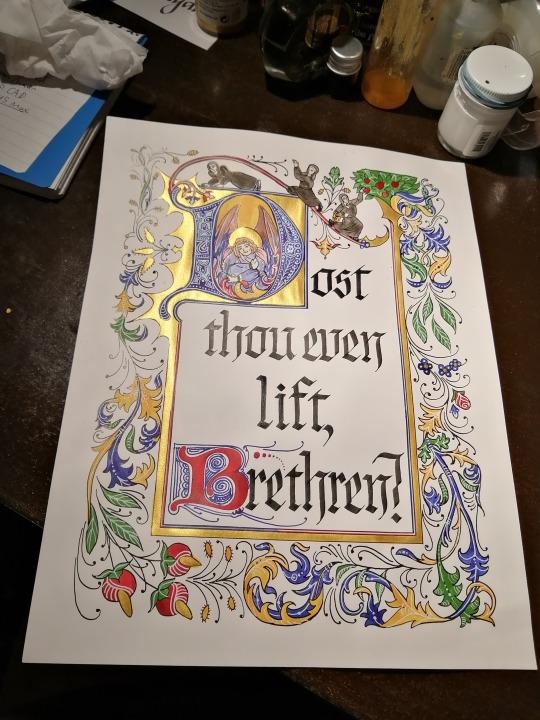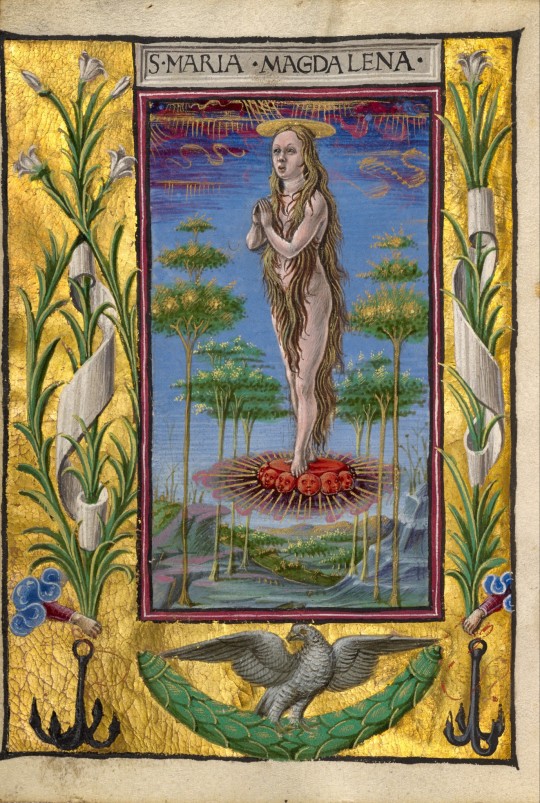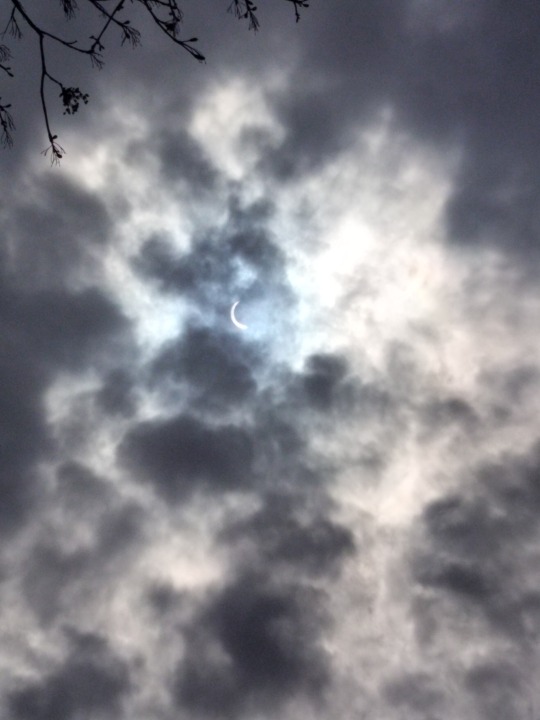Text
Eerie the eel’s head.
This full, plum-sleeked fruit of evolution.
- Ted Hughes
An eel is wielded in the bottom margin of f. 242r, Ms. Codex 724, a 13th century Bible. #drollerydonnerstag
🔗:
#medieval#manuscript#medieval manuscript#illuminated manuscript#illumination#illustration#drollery donnerstag#drollery#marginalia#grotesque
28 notes
·
View notes
Text
A #CoffeeWithACodex highlight reel from February featuring Ms. Codex 723, a 12th century collection of canon law texts with colored initials and some interesting terrain. For the full 30-minute version, go to YouTube:
#medieval#manuscript#medieval manuscript#12th century#france#latin#canon law#history of law#video#recording#youtube#book history#rare books
20 notes
·
View notes
Text
Manuscript Monday: LJS 430 - [De urinarum judiciis]. (Video Orientation)
Dot Porter, SIMS Curator for Digital Humanities at the University of Pennsylvania Library, presents a video Orientation to the University of Pennsylvania Library’s LJS 430, a manuscript copy of a printed edition of Montagnana’s work on the analysis of urine in diagnosing disease; text includes variants not in the first edition of 1487 but found in an edition published ca. 1500. A few marginal…
youtube
View On WordPress
12 notes
·
View notes
Text
April 25 is "Bring Our Children To Work Day" here at Penn, and Curator Dot Porter will be bringing her son along for #CoffeeWithACodex! He enjoys math, so we'll look at three very different manuscripts about arithmetic and geometry, dating from the 12th, 15th, and 17th centuries.
Register here:
#medieval#manuscript#illustration#illuminated manuscript#medieval manuscript#renaissance#12th century#15th century
35 notes
·
View notes
Text
A sleepy owl lurks on page 276 of Ms. Codex 3, three volumes of paintings or hand-colored sketches depicting mainly insects, fish and other marine life, birds and flowers. We don't know much about these books except that they were made in Japan, probably in the 19th century. If you know more, let us know!
🔗:
#manuscript#19th century#japan#japanese#art#art history#drawing#painting#owl#bird#book history#rare books
45 notes
·
View notes
Text

Not a mermaid or a merman but a secret third thing (mermusician)
(Cambridge UL MS Add. 4085)
1K notes
·
View notes
Text
The Schoenberg Institute is delighted to announce the next SIMS Online Lecture on Friday, April 26. See below for details.
Principles of Manuscript Poetics
Francesco Marco Aresu, University of Pennsylvania
Friday, April 26, 2024, 12:00 - 1:30 pm EDT @ Virtual
This talk offers a reflection on the interactions between textuality and materiality, message and medium, visual-verbal discourse and its physical support through readings of Giovanni Boccaccio’s Teseida and Francesco Petrarca’s Rerum vulgarium fragmenta. Each of these texts is read as an interaction between conceptual, linguistic, rhetorical, and material elements. In a manuscript poetics, the container and the content, the book and the text, share a material and symbolic solidarity. The book represents the primary idea of the text, and the text, conceptually, assumes the material shape of a book. A manuscript poetics informed the Teseida and the Rerum vulgarium fragmenta: operating within the manuscript culture of late medieval Italy, Boccaccio and Petrarca evaluated and deployed the tools and strategies of scribal culture to shape, signal, and layer meanings coextensive to those they conveyed verbally in their written texts.
More information and a link to register are available here:
15 notes
·
View notes
Text
This is incredible!! I love the in-progress shots! Thank you for tagging us on this!
a lil something from the commission stack

I was asked to include a beefy angel and swole nuns
2K notes
·
View notes
Text
For #CoffeeWithACodex on April 11, Curator Dot Porter was joined by guest host Louis Meiselman, Judaica Special Collections Cataloging Librarian. We looked at CAJS Rar Ms 25, a collection of medieval leaves in Hebrew that have been used in bindings.
Watch the full 30-minute recording on YouTube:
#cwac#hebrew#manuscript#medieval#medieval manuscript#fragments#binding#binding fragments#binding waste#video#event#13th century#14th century#book history#rare books
39 notes
·
View notes
Text
For #CoffeeWithACodex on April 18 (12pm Noon EST on Zoom), Curator Dot Porter will bring out Ms. Codex 3, three volumes containing paintings or hand-colored sketches depicting mainly insects, fish and other marine life, birds and flowers. The manuscript was created in Japan, probably in the 19th century.
Register here:
#coffee with a codex#cwac#event#video#zoom#manuscript#japan#japanese#drawing#painting#art#art history#19th century#book history#rare books
34 notes
·
View notes
Text
Manuscript Monday: LJS 429 - Natural Philosophy (Video Orientation)
Dot Porter, SIMS Curator for Digital Humanities at the University of Pennsylvania Library, presents a video Orientation to the University of Pennsylvania Library’s LJS 429, an illustrated introduction to natural philosophy, supposedly according to the principles of Isidore of Seville, but in fact representing later Aristotelian and Thomist thought and opposing the followers of Duns Scotus,…
youtube
View On WordPress
25 notes
·
View notes
Text
Four hands are better than two!!
WE UNBOXED THE PETRARCH
Watch!
youtube
It's a c. 1470s copy of Canzoniere and Trionfi, with Leonardo Bruni's Life of Petrarch. Made in the Workshop of Francesco di Antonio del Chierico. More information in the sales description.
78 notes
·
View notes
Text
WE UNBOXED THE PETRARCH
Watch!
youtube
It's a c. 1470s copy of Canzoniere and Trionfi, with Leonardo Bruni's Life of Petrarch. Made in the Workshop of Francesco di Antonio del Chierico. More information in the sales description.
78 notes
·
View notes
Text
From troubles of the world
I turn to ducks.
- F. W. Harvey
An arguable blue duck flies low in the bottom margin of f. 230r, Ms. Codex 724, a 13th century Bible. #drollerydonnerstag
🔗:
#medieval#manuscript#medieval manuscript#illuminated manuscript#illumination#illustration#13th century#bible#france#drollery#drollery donnerstag#marginalia#bird#duck#maybe a duck#animal#book history#rare books
36 notes
·
View notes
Text
A beautiful purple-blue iris waves at us from page 190 of Ms. Codex 3, three volumes of paintings or hand-colored sketches depicting mainly insects, fish and other marine life, birds and flowers. We don't know much about these books except that they were made in Japan, probably in the 19th century. If you know more, let us know!
🔗:
#manuscript#rare books#book history#japan#japanese#19th century#art#drawings#paintings#iris#flower#flowers
54 notes
·
View notes
Text

~ Mary Magdalene Borne Aloft.
Artist/Maker: Taddeo Crivelli (Italian, died ca. 1479, active about 1451-1479)
Date: ca. 1469
Place of origin: Ferrara, Emilia-Romagna, Italy
Medium: Tempera colors, gold paint, gold leaf, and ink.
532 notes
·
View notes
Text
And I even got a photo during the real thing! Only 88% totality in Philadelphia, but it got a little dim and chilly.

Today we're celebrating the eclipse with diagrams from several manuscripts from the Schoenberg Collection! They range from the 13th to the 16th centuries, and include texts in Latin, Hebrew, Arabic, and Persian. You'll see, however, that the diagrams in the different books are quite similar to each other!
To watch the complete 30-minute video, go to YouTube:
138 notes
·
View notes